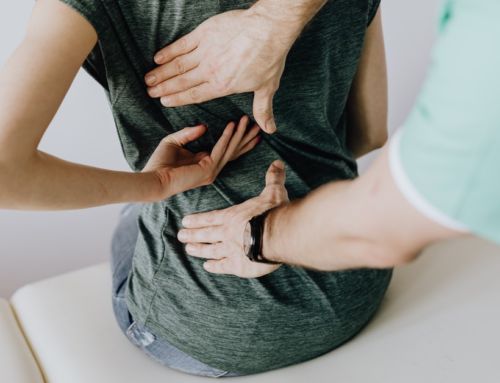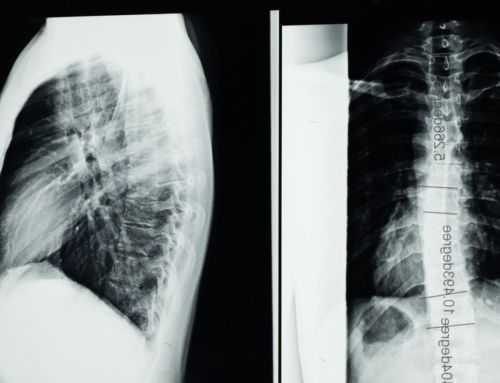Our bodies have impressive healing capabilities, but sometimes they need some support to work as intended. Many “treatments” for pain and injury, like opioids and muscle relaxants, are band-aids that mask symptoms and don’t encourage healing. Real healing is possible, even if you’ve struggled with chronic pain for some time. Here’s what you need to know about the healing process and the treatments that help it work better.
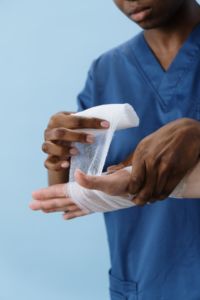
How Our Bodies Heal
When your body receives an injury, whether that’s a muscle strain, a tendon tear, or an abrasion, it responds immediately. First, it sends blood to the area and works to stop excess bleeding via clotting factors. The blood flow also contains specialized cells that clean up debris and kill germs. Some of these specialized cells cause an immune response at the injury site, leading to inflammation, and unfortunately, pain. A certain amount of inflammation is normal and beneficial. The next stage of healing is called the proliferative phase. During this phase, the body tells cells to produce collagen and build new tissues. The final stage of healing is called the remodeling or maturation phase. The body turns the fragile new tissue into strong, functional tissue. It does this by organizing the collagen cells and fibers into a stronger pattern.
These stages of healing overlap with one another, and the process can take anywhere from several weeks to a year to complete. Typically a person can function normally during the beginning of the last stage of healing but must take care not to reinjure the area.
A stalled healing process can cause chronic pain and slow healing wounds. Nutritional and metabolic factors can impair healing, but sometimes healthy people also struggle to heal. Since blood flow is integral to the healing process, tissues that don’t receive robust blood flow take longer to heal than tissues with robust blood flow. Tendons, spinal discs, and joints are examples of tissues with less blood flow.
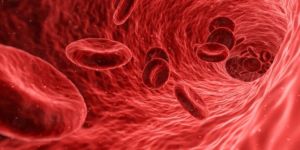
Why Treatment Helps
When an injured area has trouble healing, it may stay in a state of low-level inflammation and not progress through the final stages of healing. This causes chronic pain and stiffness. Treatments that encourage blood flow and cellular processes can jumpstart the healing process so the area can move past the inflammatory stage. Sometimes an injury heals with too much scar tissue or scar tissue that adheres to surrounding tissues. This can also cause chronic pain. Non-surgical treatment options can solve this problem as well.
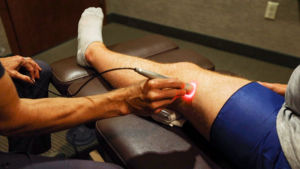
Laser Therapy for Faster Healing
Cold laser therapy is a safe, non-invasive treatment that has been proven to reduce inflammation and speed healing. It uses red and near-infrared light (class IV laser) to stimulate cellular processes. Laser therapy causes the cells to produce collagen and increases blood flow, bringing nutrients, oxygen, and healing factors to the area. Studies have shown that there is strong evidence that laser therapy speeds healing and reduces the need for prescription and over-the-counter pain relievers.
Cold Laser therapy is FDA approved and considered safe for most people, but there are some contraindications. People with pacemakers, epilepsy, or cancer should consult a physician before having laser therapy. Pregnant women and children may be able to receive laser therapy as long as it is not used near the fetus or over a child’s growth plate. Your provider should ask you about your medical history before you receive treatment.
Chronic pain after a musculoskeletal injury can be successfully treated with laser therapy. Your provider may combine laser therapy with exercises or other treatments to obtain the best result.

Acoustic Compression Therapy for Excess Scar Tissue
Reduced range of motion, stiffness, and tender trigger points are common complaints after a musculoskeletal injury. Sometimes these symptoms persist for years after an injury has healed. In some cases, these problems are caused by excess internal scar tissue. The body is supposed to organize scar tissue to form a functional tissue area during the healing process. Sometimes the scar tissue adheres to surrounding tissues or becomes too thick or fibrous. Over time as nerve endings regenerate, you may begin to feel pain in the area.
Acoustic compression therapy is similar to ultrasound technology in that it uses sound waves, but the waves in acoustic compression are 1000x more concentrated. They can be directed at the site of the healed injury and used to break up excess scar tissue and reduce inflammation. The treatment is comfortable and non-invasive. Patients can often feel the sensation of the sound waves deep in their tissues and can direct the provider where to aim them.
Acoustic compression is FDA approved and is a safe and conservative treatment for pain caused by excess scar tissue. Patients typically notice an increased range of motion and reduced pain after only a few sessions. Acoustic compression can also be used on painful knots or trigger points and to help heal large bruises. In addition to breaking up scar tissue, it also brings blood flow to the area and helps flush out lactic acid.
Sometimes surgery is recommended to remove excess scar tissue, but this is often ineffective as the surgery itself can promote new scar tissue growth. Acoustic compression can be used by itself or with stretches and manual manipulations like massage to break up scar tissue safely, without encouraging new growth.
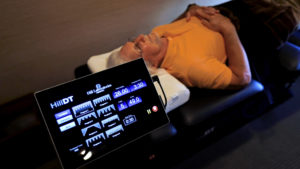
Spinal Decompression Therapy for Injured Discs
Spinal discs and joints don’t receive robust blood flow and are often slow to heal. Spinal decompression therapy is a type of motorized traction that creates negative pressure between a patient’s vertebrae. It is safe and comfortable and is used primarily to treat bulging, herniated, and compressed discs, as well as facet joint problems. The negative pressure sucks bulging discs and leaking fluid back into place and brings blood flow to the area, rehydrating the discs. This causes physiological changes that encourage healing. Up to 86% of patients dealing with low back pain experience long-term relief after completing a series of decompression treatments.
Treatments for Real Healing in Michigan
At Burkhart Chiropractic, our goal is to help patients heal. Real healing leads to long-term pain relief and restoration of normal function. Our treatments can reduce your need for dangerous and addictive medications and return you to your normal activities. Schedule a consultation today to see how we can help you heal.


